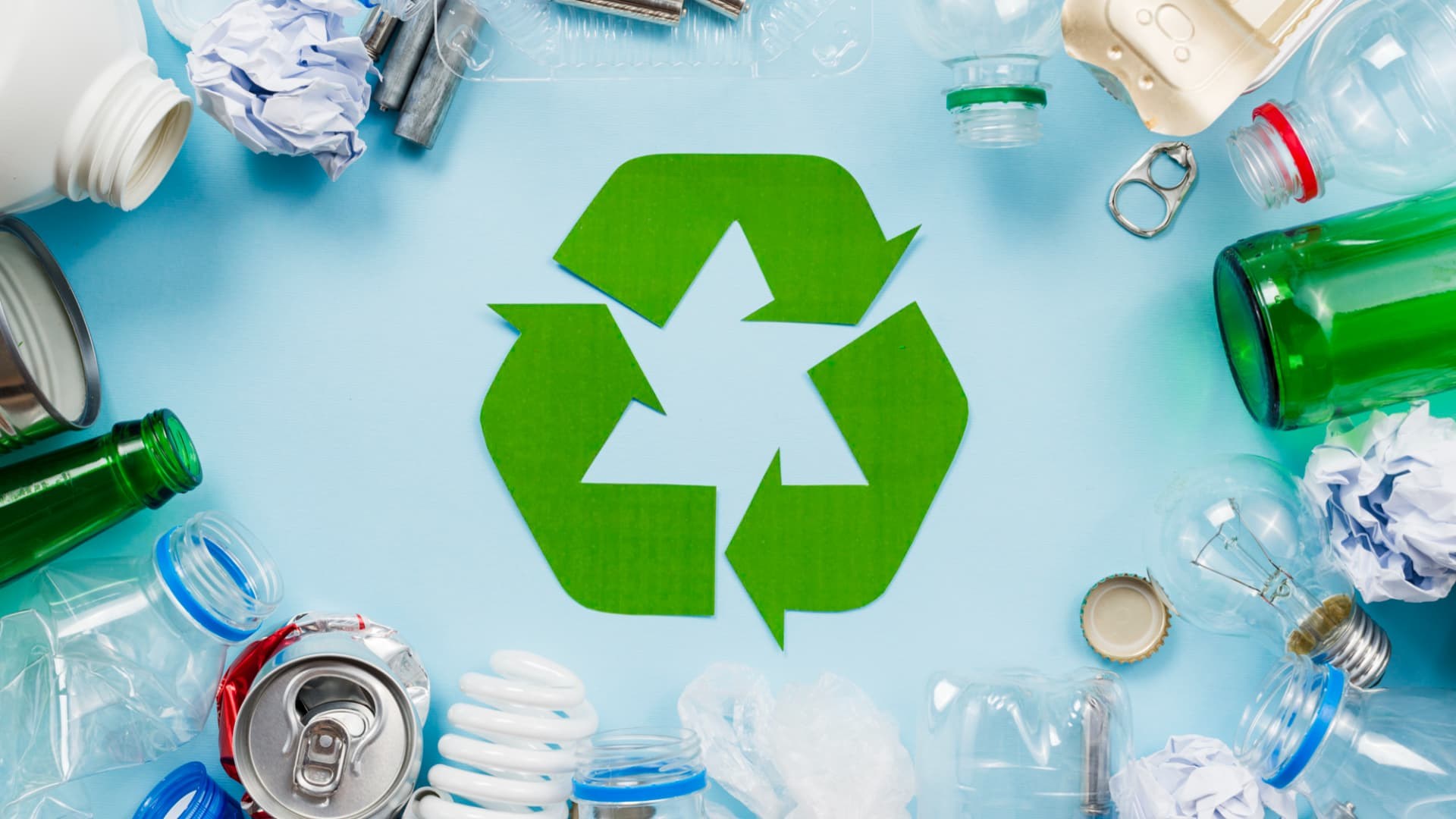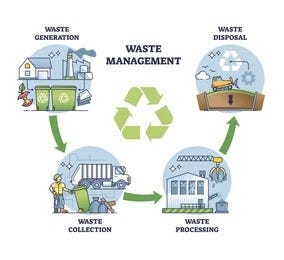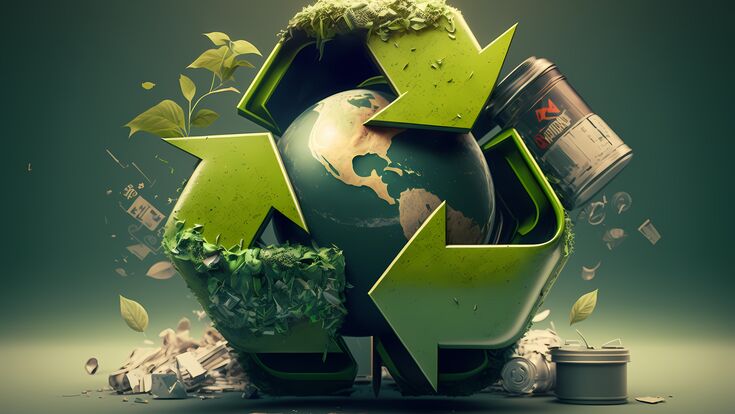Recycling Lives Services: Blazing A Trail in Accountable Recycling
Recycling Lives Services: Blazing A Trail in Accountable Recycling
Blog Article
Exploring Various Kinds Of Waste in Modern Waste Monitoring Systems
The modern landscape of waste administration involves navigating a complex array of waste types, each requiring specialized handling and disposal methods to reduce ecological impacts. Municipal solid waste, hazardous waste, electronic waste, and organic waste each present distinctive obstacles and opportunities for source healing. Cutting-edge services such as smart waste containers and waste-to-energy modern technologies are arising as important tools in boosting performance and sustainability. Comprehending these waste types is essential for fostering public awareness and motivating energetic engagement in lasting techniques. What approaches can properly resolve these diverse kinds of waste while advertising a round economic climate?
Local Strong Waste
Local solid waste, usually referred to as family trash or trash, encompasses a range of disposed of products produced by residential, industrial, and institutional resources within a municipality. This waste stream generally consists of products such as packaging, food scraps, yard trimmings, paper, plastics, fabrics, and discarded household products. The administration of municipal solid waste is a vital part of city planning and public health and wellness, requiring efficient collection, transport, and disposal systems.
Efficient waste administration systems are made to minimize ecological influence while taking full advantage of resource recuperation. Composting organic waste, such as food scraps and lawn trimmings, not just decreases landfill use yet additionally generates useful dirt amendments.
Communities should also resolve the logistical and economic difficulties connected with waste management. Applying pay-as-you-throw systems, boosting public awareness, and investing in technology can substantially improve waste diversion rates. By integrating these techniques, towns can cultivate sustainable areas, minimize greenhouse gas emissions, and save natural deposits.
Hazardous Waste

Reliable contaminated materials administration involves several crucial steps: identification, treatment, segregation, and disposal. Identification requires the classification of waste based upon its dangerous properties. Partition guarantees that harmful products are kept independently from non-hazardous waste to avoid cross-contamination. Treatment techniques, such as chemical neutralization, incineration, and stablizing, are employed to decrease the poisoning, quantity, or flexibility of the waste. Disposal options, including protected land fills and underground storage space, are picked to ensure long-term containment.
Regulative structures, such as the Resource Preservation and Recovery Act (RCRA) in the USA, supply standards and criteria for hazardous waste monitoring. Adherence to these laws, combined with advancements in waste therapy innovations, is vital in mitigating the dangers connected with contaminated materials.
Electronic Waste
Electronic waste, commonly described as e-waste, stands for a swiftly expanding challenge in waste management systems globally. This sort of waste includes disposed of digital gadgets and tools such as smartphones, computer systems, tvs, and other digital home appliances. The rapid pace of technical improvement, paired with decreasing item life-spans and consumer need for the latest gadgets, has actually significantly increased the volume of e-waste generated annually.
E-waste is especially bothersome because of its complex composition, usually including hazardous compounds like lead, cadmium, and mercury, which posture considerable ecological and health dangers if not correctly handled. On the other hand, e-waste likewise contains useful products such as copper, silver, and gold, which can be recovered and recycled. The dual nature of e-waste-- both useful and harmful-- necessitates specific handling, recycling, and disposal processes.
Efficient e-waste administration includes stringent governing structures, robust collection systems, and progressed recycling modern technologies. Public recognition and engagement are essential, as improper disposal practices, such as prohibited disposing and casual recycling, worsen environmental contamination and carcinogen. Consequently, enhancing e-waste management methods is essential for reducing eco-friendly influence and recouping important sources in a significantly electronic globe.

Organic Waste
Organic waste, consisting of cooking area scraps, backyard trimmings, and agricultural residues, represents a substantial part of the global waste stream. This kind of waste is naturally degradable, meaning it can be damaged down by microorganisms into easier organic compounds. Regardless of its possibility for natural decomposition, inappropriate monitoring of natural waste can result in adverse environmental impacts, including the exhaust of greenhouse gases such as methane, which add to environment modification.
Reliable administration of natural waste is important for reducing these environmental impacts (recycling lives services). Composting is a commonly adopted method, transforming organic waste into nutrient-rich compost that can improve dirt wellness and agricultural productivity. Additionally, anaerobic food digestion is an arising modern technology that converts organic waste into biogas, click to investigate a renewable resource resource, and digestate, which can be used as plant food
Municipalities and waste administration entities need to implement durable natural waste collection and therapy programs to optimize the benefits of these procedures. Public education and learning projects can also play a pivotal function in motivating homes and organizations to different natural waste from various other sorts of waste. By focusing check over here on the administration of organic waste, societies can lower land fill usage, reduced greenhouse gas discharges, and produce beneficial results for farming usage.

Cutting-edge Waste Management
In the world of waste management, ingenious techniques are transforming just how societies handle their refuse, aiming for sustainability and performance. One popular development is the application of wise waste containers equipped with sensors that keep an eye on fill levels and optimize collection paths.
One more notable growth is the adoption of waste-to-energy (WtE) technologies. By converting non-recyclable waste into useful power through procedures such as incineration and anaerobic digestion, WtE decreases garbage dump concern and gives a renewable energy source. In addition, improvements in chemical reusing enable for the malfunction of complicated plastics into their initial monomers, making it possible for the production of brand-new, premium plastic products.
Moreover, the circular economic climate model is acquiring traction, emphasizing the layout of products and systems that prioritize reusability and resource efficiency. This all natural approach urges markets to lessen waste generation from the beginning. With these innovative approaches, contemporary waste management systems are not only resolving the instant difficulties of waste disposal however likewise leading the method for a more lasting future.
Verdict
An extensive understanding of local solid waste, contaminated materials, digital waste, and organic waste, coupled with the application of ingenious waste management remedies, is crucial for mitigating environmental impacts. Incorporating innovations such as clever waste bins and waste-to-energy systems can improve effectiveness and sustainability. Reliable waste administration strategies not just foster source healing but also advertise public understanding and participation, ultimately contributing to the development of a circular economic climate.
The modern landscape of waste administration involves navigating a complex variety of waste types, each calling for specialized handling and disposal techniques to alleviate ecological influences. Community strong waste, harmful waste, digital waste, and natural best site waste each existing distinct challenges and possibilities for source recuperation.Digital waste, generally referred to as e-waste, represents a rapidly expanding challenge in waste monitoring systems around the world. With these ingenious methods, contemporary waste monitoring systems are not just resolving the prompt obstacles of waste disposal yet likewise paving the method for an extra sustainable future.
An extensive understanding of metropolitan strong waste, harmful waste, digital waste, and natural waste, coupled with the implementation of ingenious waste management services, is critical for minimizing ecological effects. (recycling lives services)
Report this page